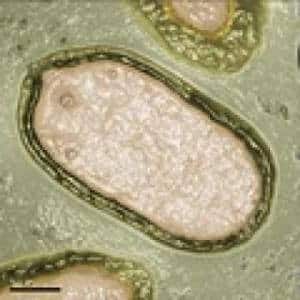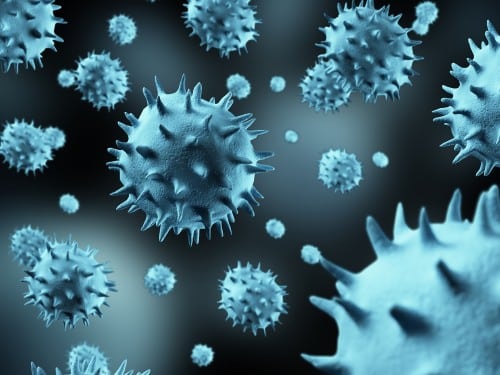Two species of giant viruses discovered in South America and Australia contain about 1,100 genes, and are close in size to bacteria, but they retain the properties of the virus - they do not divide. Common viruses such as influenza or AIDS have only about ten genes

With the discovery of Mimi-Virus about a decade ago (and the false claim As if he came from Mars which resulted from an unsuccessful joke of the researcher in a press interview), and not long ago Megavirus chilensis - a huge virus discovered in Chile, the researchers thought that they had reached the peak possible in the world of viruses in terms of size and genetic complexity. With a diameter in the micrometer region and a genome containing over 1,100 genes, these giant viruses, which attack amoebas of the species Acanthamoeba, approach the order of magnitude of bacteria. For comparison, common viruses such as the flu or AIDS contain about ten genes.
In an article published in the journal Science, the researchers announced that they had discovered two types of giant viruses - one Pandoravirus salinus was discovered on the coast of Chile and Pandoravirus dulcis was discovered in a freshwater pool in Melbourne, Australia.
An in-depth analysis of these viruses showed that these two Pandora viruses have almost nothing in common with the previously discovered giant viruses. Only a tiny proportion of the proteins encoded by Pandoravirus salinus, 6%, are similar to those already identified in other viruses or cellular organisms.
More of the topic in Hayadan:
- Getting closer to a universal flu vaccine
- A virus is made entirely of artificial genes
- The little killers: the virus that most of us carry, and that takes four years of our lives
With a genome this size, Pandoravirus Salinus showed that viruses can be more complex than eukaryotic cells. Another unusual feature of Pandora viruses is that they do not have any genes that allow them to build proteins such as capsids, which are the building blocks of known viruses.

Despite all these new features, the Pandora viruses share the basic characteristics of the other viruses because they do not contain a ribosome and do not produce energy and of course do not divide.
The study included mapping the proteome of Pandoravirus salinus, which revealed that the proteins that make it up are consistent with those predicted by the genome sequence of the virus. Pandora viruses use the universal genetic code shared by all living things on Earth.
This shows how much there is still to learn about microscopic biodiversity. The plausible discovery of a new family of viruses in sediments 15 km apart indicates that the Pandora viruses, which are a hitherto unknown family, may not be so rare.
According to the scientists, the new viruses bridge the gap between viruses and cells, a gap that has been considered the basis of modern virology since the 20s. They also hypothesize that cellular life could have arisen from a wider variety of procellular cells than previously thought, since the giant viruses have no counterpart among the three known superkingdoms of cellular life—the eukaryotes, bacteria, and archaea.
Based on a notice from the French Atomic Energy Agency

7 תגובות
Connecting link is a subjective concept. In one resolution it seems related, but when you go deeper you can think there is no connection. It all depends on what features you look at and what exactly you are looking for.
The more interesting question to me is, how can it be determined today that a certain virus is natural and not synthetic? Apparently it is possible to fake viruses that you want to get easily in laboratories and spread them around the planet.
Thanks to Dror for the smart comment.
There was an idea that the source of the virus was the spaceman (via an asteroid). Because the genetic sequence is complex and can point to mutations. Ancient, and ancient, extraterrestrial surrogates
As sophisticated as they may be, rich in genes, they are still amoeba viruses and that's all.
The whole thing of a connecting link between viruses and cells is, in my opinion, scientifically unfounded. Because every virus needs a cell to reproduce. Therefore there were probably cells first, followed by simple viruses and these accumulated genes. It is clear to me that the regular press (and sometimes the researchers themselves) are looking for exaggerated headlines. You need more redundant shields to declare a missing link.